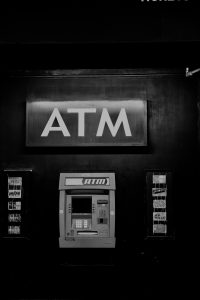Behind the Scenes: The Creative Process of Designing Forex Trading Platforms
Forex trading platforms are the backbone of the foreign exchange market, enabling traders to access the global currency market and execute trades with ease. These platforms are carefully designed to provide a seamless trading experience, offering a range of features and tools that cater to the needs of both novice and experienced traders. However, the creative process behind designing these platforms is often overlooked. In this article, we will delve into the behind-the-scenes work that goes into creating forex trading platforms.
The initial stage of designing a forex trading platform involves extensive research and analysis. Designers and developers need to thoroughly understand the needs and preferences of traders, as well as the functionalities and features that are essential for a smooth trading experience. They study the existing platforms in the market, analyze user feedback, and identify areas for improvement.
Once the research phase is complete, the design team begins to conceptualize the platform’s user interface (UI) and user experience (UX). The goal is to create a visually appealing and intuitive platform that is easy to navigate, even for traders with limited technical knowledge. The UI design involves the selection of colors, fonts, and graphics that best represent the brand identity and create a visually pleasing experience for the user.
Simultaneously, the UX design focuses on creating a seamless and user-friendly experience. Designers must consider the different types of users who will be using the platform, such as day traders, swing traders, or long-term investors, and tailor the platform’s features to meet their specific needs. The goal is to provide a platform that is flexible and customizable, allowing traders to personalize their trading experience.
Once the initial design concepts are ready, designers move on to creating wireframes and prototypes. Wireframes are simplified visual representations of the platform’s layout, highlighting the placement of different elements and features. These wireframes serve as the foundation for the development process, allowing the design team to test and refine the platform’s usability before moving onto the next stage.
The development phase begins with the coding and programming of the platform. This is where the technical expertise of the development team comes into play. They transform the design concepts into a fully functioning platform, ensuring that all the features and tools work seamlessly and efficiently. The development team also focuses on optimizing the platform’s performance, making sure that it can handle the high volume of trades and data that occurs in the forex market.
Throughout the development process, constant testing and feedback loops are essential. Designers and developers work closely together to identify any issues or bugs and make necessary improvements. They conduct usability tests with real traders, gathering feedback on the platform’s functionality, ease of use, and overall trading experience. This feedback is invaluable in refining the platform and ensuring that it meets the needs and expectations of traders.
Once the development phase is complete, the platform undergoes rigorous testing to ensure its stability and security. This includes stress testing to simulate high trading volumes, as well as security testing to identify and address any vulnerabilities. The goal is to create a platform that is reliable, secure, and able to handle the demands of the forex market.
Finally, the platform is ready for launch. Designers and developers work closely with marketing teams to create promotional materials and campaigns that highlight the platform’s unique features and benefits. They also provide training materials and support to help traders familiarize themselves with the platform and make the most of its capabilities.
In conclusion, designing a forex trading platform is a complex and meticulous process. It requires a deep understanding of the needs and preferences of traders, as well as the technical expertise to create a seamless and user-friendly experience. From initial research and design concepts to development, testing, and launch, every step is carefully crafted to ensure that the platform meets the demands of the forex market and provides traders with a powerful tool for success.





